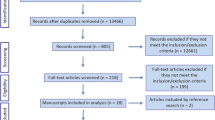Abstract
Dynamic stability can be threatened by various travel surface changes that humans encounter on a daily basis. The central nervous system (CNS) must acquire appropriate information about upcoming surface changes and provide necessary proactive and reactive changes to maintain stability. The purpose of this study was to examine stability control by characterizing adaptations in step patterns, center of mass (COM) trajectory, and lower limb muscle activity when stepping onto and walking on a compliant surface. Eight young adults walked under two conditions: baseline ground walking and while walking on a large foam mat (compliant surface). Optotrak system was used to collect 3D-full body kinematics and electromyography was collected for the rectus femoris, biceps femoris, tibialis anterior, medial gastrocnemius, and soleus bilaterally. Vertical COM decreased on the compliant surface while medio-lateral COM was not affected. This lowering of the vertical COM peak would provide a more stable posture when walking on the surface. Toe trajectory during the swing phase was elevated to avoid tripping on the deformable compliant surface. Step width and length increased on the compliant surface which would increase base of support and provide better control of COM. Increases in gastrocnemius and soleus activity during push-off accounted for increases in step length seen on the compliant surface. Dynamic stability margin in the anterior–posterior direction demonstrated a constant overcompensation and subsequent correction in COM control. These proactive and reactive changes in motor patterns show how the CNS actively coordinates all body segments while traveling on a compliant surface in order to maximize stability.







Similar content being viewed by others
References
Dixon SJ, Collop AC, Batt ME (2000) Surface effects on ground reaction forces and lower extremity kinematics in running. Med Sci Sports Exerc 32:1919–1926
Ferris DP, Louie M, Farley CT (1998) Running in the real world: adjusting leg stiffness for different surfaces. Proc R Soc Lond B Biol Sci 265:989–994
Ferris DP, Liang K, Farley CT (1999) Runners adjust leg stiffness for their first step on a new running surface. J Biomech 32:787–794
Hardin EC, van den Bogert AJ, Hamill J (2004) Kinematic adaptations during running: effects of footware, surface, and duration. Med Sci Sports Exerc 36:838–844
Hof AL, Gazendam MGJ, Sinke WE (2005) The condition for dynamic stability. J Biomech 38:1–8
Lord SR, Menz HB (2000) Visual contributions to postural stability in older adults. Gerontology 46:306–317
Marigold DS, Patla AE (2002) Strategies for dynamic stability during locomotion on a slippery surface: effects of prior experience and knowledge. J Neurophysiol 88:339–353
Marigold DS, Patla AE (2005) Adapting locomotion to different surface compliances: neuromuscular responses and changes in movement dynamics. J Neurophysiol 94:1733–1750
McMahon TA, Greene PR (1979) The influence of track compliance on running. J Biomech 12:893–904
Moritz CT, Greene SM, Farley CT (2004) Neuromuscular changes for hopping on a range of damped surfaces. J Appl Physiol 96:1996–2004
Patla AE (2003) Strategies for dynamic stability during adaptive human locomotion. IEEE Eng Med Biol Magaz 22:48–52
Patla AE, Armstrong CJ, Silveira JM (1989) Adaptation of muscle activation patterns to transitory increase in stride length during treadmill locomotion in humans. Hum Mov Sci 8:45–66
Winter DA (2005) Biomechanics and motor control of human movement. Wiley, Hoboken
Acknowledgements
We acknowledge the help provided by Michael Greig and Daniel Marigold during the course of this study. Funding for this work was provided by NSERC and OGS scholarship to the first author.
Author information
Authors and Affiliations
Corresponding author
Additional information
An erratum to this article can be found at http://dx.doi.org/10.1007/s00221-006-0494-7
Rights and permissions
About this article
Cite this article
MacLellan, M.J., Patla, A.E. Adaptations of walking pattern on a compliant surface to regulate dynamic stability. Exp Brain Res 173, 521–530 (2006). https://doi.org/10.1007/s00221-006-0399-5
Received:
Accepted:
Published:
Issue Date:
DOI: https://doi.org/10.1007/s00221-006-0399-5




